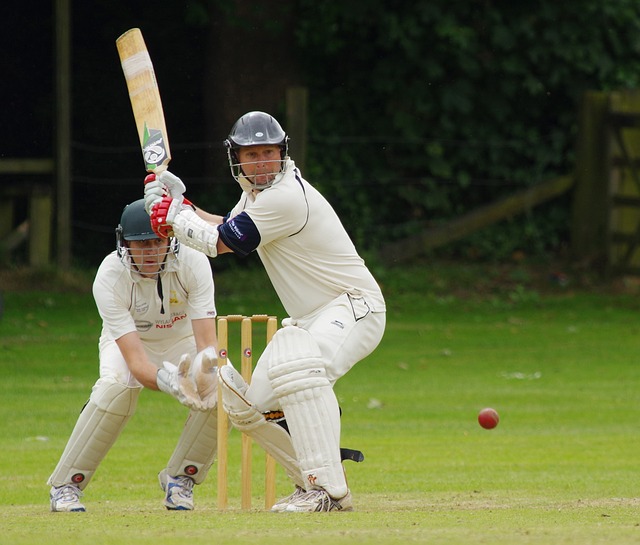Outdoor games are recreational activities or sports that are played in an open environment, typically outside the confines of buildings. These activities often involve physical exertion, skill, and strategy, and are usually carried out in natural or open-air settings such as parks, playgrounds, fields, beaches, or backyards.
Unlike indoor games, which are played within enclosed spaces, outdoor games leverage the vastness and unpredictability of the natural environment, adding a unique dimension to the game-play experience.
The essence of outdoor games lies in their ability to blend physical exercise with enjoyment, social interaction, and a connection to nature. They range from structured sports with formal rules and regulations, like soccer, basketball, and tennis, to more casual and spontaneous activities like tag, Frisbee, and hide and seek.
Adventure and extreme sports, such as rock climbing, surfing, and mountain biking, also fall under the category of outdoor games, providing thrill and excitement along with physical challenges.
Outdoor games are not just limited to competitive sports; they also include activities aimed at recreation and relaxation. These games can be played individually, such as jogging or cycling, or in groups, fostering teamwork and camaraderie. The diversity of outdoor games ensures that there is something for everyone, regardless of age, interest, or fitness level.
In today’s digital age, where screen time often dominates leisure activities, the importance of outdoor games has become increasingly significant. They offer a refreshing break from sedentary lifestyles, promoting physical health, mental well-being, and social interaction. Outdoor games encourage individuals to move, explore, and engage with their surroundings, providing a holistic approach to health and happiness.
Overall, outdoor games are a vital aspect of a balanced and active lifestyle. They provide a platform for fun, fitness, and socialization, all while allowing individuals to experience the beauty and benefits of the great outdoors.
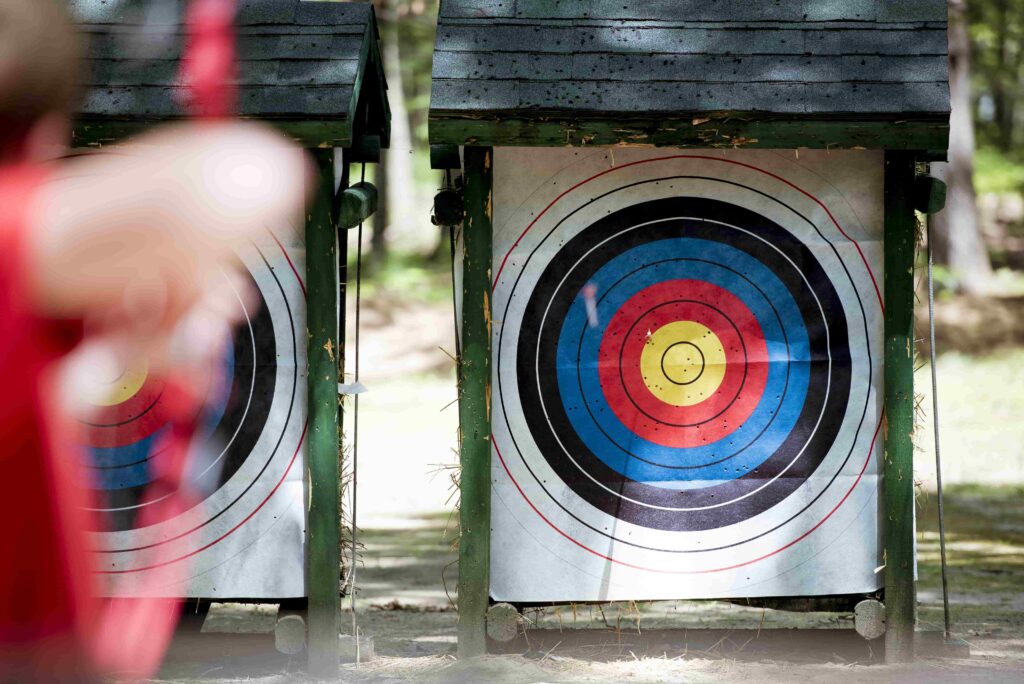
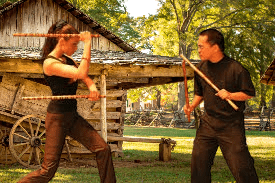
Historical Perspective of Outdoor Games
Early human societies engaged in various physical activities such as hunting, wrestling, running, and throwing, which eventually evolved into more structured forms of play and competition.
Origins of Outdoor Games
The origins of outdoor games can be traced back to ancient civilizations where physical activities were not only a means of survival but also a form of entertainment, socialization, and ritualistic practice.
Ancient Egypt
Archery:
Practiced as both a hunting skill and a competitive sport among the elites.
Stick Fighting:
A popular martial art and sport, depicted in ancient Egyptian murals.
Board Games:
While primarily indoor, games like Senet were sometimes played outdoors.
Ancient Greece
Olympic Games:
The most famous example, originating around 776 BCE, included events such as running, long jump, shot put, javelin, boxing, and equestrian events.
Public Gymnasiums:
Places where citizens trained and competed in various athletic activities.

Ancient Rome
Combative sports held in large arenas like the Colosseum.
Chariot Racing:
Popular in the Circus Maximus, it was a dangerous and thrilling sport.
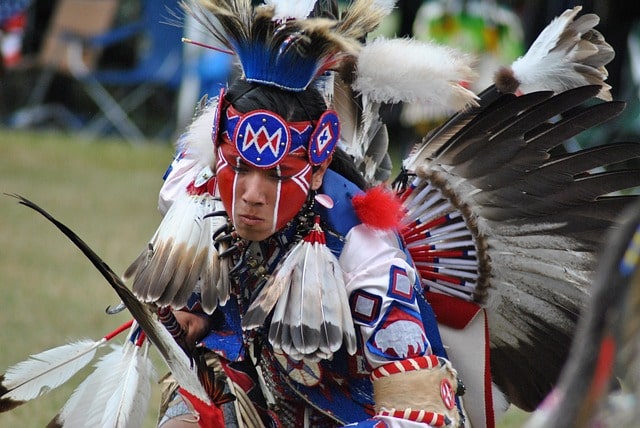
Indigenous Cultures
Native American Sports:
Lacrosse, originally known as stickball, played by various tribes for training warriors and resolving conflicts.
Mesoamerican Ballgame:
Played by ancient civilizations like the Maya and Aztecs, often with religious and cultural significance.
Evolution of Outdoor Games Through Different Cultures and Eras
As societies evolved, so did the nature and complexity of their outdoor games. These activities reflected the cultural, social, and technological advancements of their times.
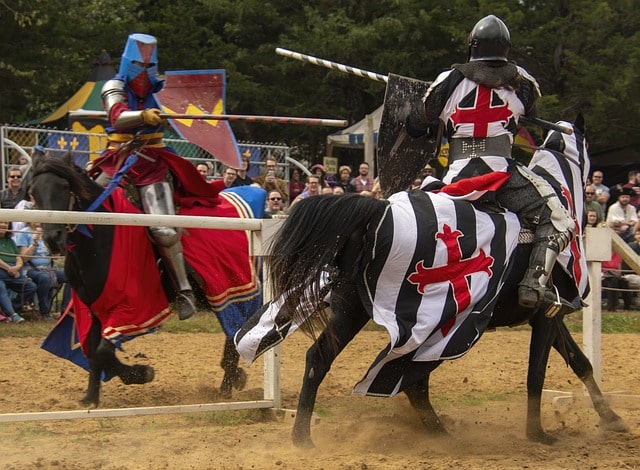
Medieval Europe:
Jousting:
A martial game between two horsemen wielding lances, popular among knights.
Archery Competitions:
Continued as a vital skill for hunting and warfare.
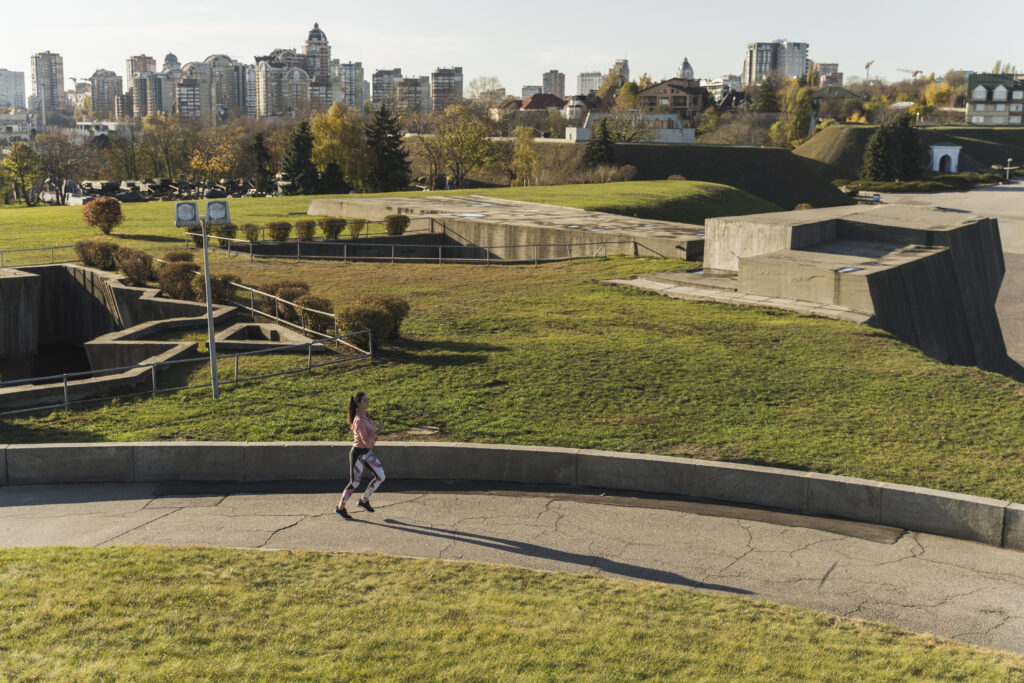
Renaissance and Enlightenment Periods:
Sporting Clubs:
The establishment of clubs and societies that formalized games like cricket, tennis, and golf.
Expansion of Public Parks:
Provided venues for the general public to engage in various outdoor activities.
Colonial and Early Modern Periods:
Spread of European Sports:
Colonization led to the global spread of European sports such as soccer, rugby, and cricket.
American Innovations:
The emergence of sports like baseball and American football in the United States.
Modern Era:
Olympic Revival:
The modern Olympic Games, started in 1896, helped globalize sports and introduced new disciplines.
Technological Influence:
Innovations such as synthetic materials for equipment and advancements in safety gear transformed many outdoor sports.
Traditional Outdoor Games in Various Parts of the World
Outdoor games have a rich diversity across different cultures, often reflecting the unique environmental and societal characteristics of each region.
Asia:
Kabaddi (India):
A team sport involving both physical agility and strategy.
Sepak Takraw (Southeast Asia):
A game similar to volleyball but played with a rattan ball and without using hands.

Africa:
Mancala:
A traditional game involving strategy and counting, often played outdoors.
Nguni Stick Fighting (South Africa):
A martial art practiced by the Nguni people, particularly the Zulu.

Europe:
Boules/Petanque (France):
A game where players throw metal balls as close as possible to a small wooden ball.
Gaelic Games (Ireland):
Including Gaelic football and hurling, these sports are deeply embedded in Irish culture.
North America:
Lacrosse:
With roots in Native American culture, it has evolved into a popular sport.
Baseball:
Known as America’s pastime, it has historical roots dating back to the 19th century.
South America:
Tejo (Colombia):
A traditional throwing sport where participants aim to hit a target with metal discs.
Capoeira (Brazil):
A blend of martial art, dance, and game with African origins.
Oceania:
Australian Rules Football:
A unique blend of rugby and soccer with a rich history in Australia.
Kilikiti (Samoa):
A traditional version of cricket played in Samoa and other Pacific islands.
Conclusion
The historical perspective of outdoor games reveals a fascinating journey from ancient rituals and survival skills to modern-day sports and recreational activities. Each era and culture has contributed to the rich tapestry of outdoor games, reflecting the values, challenges, and innovations of their times. Understanding this history not only enhances our appreciation of these activities but also underscores their enduring importance in human society.
Categories of Outdoor Games
Outdoor games can be broadly categorized based on the nature of the activity, the level of organization, and the primary objectives. Here, we will explore four main categories: individual sports, team sports, adventure and extreme sports, and recreational games.

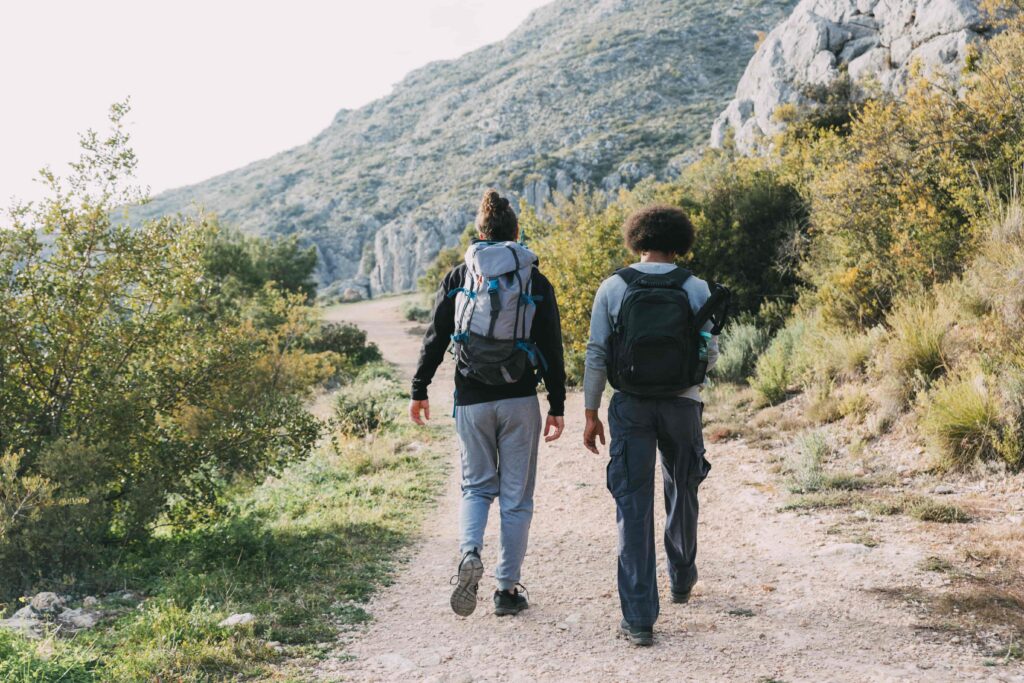
Individual Sports
Individual sports are those where participants compete alone, focusing on personal performance, skill, and endurance. These sports often emphasize self-discipline and personal achievement.
Running
Track and Field:
Includes short sprints, middle-distance, and long-distance running events. Races can vary from 100 meters to marathons (42.195 kilometers).
Trail Running:
Involves running on natural terrains such as forests, mountains, and deserts, offering varying difficulty levels and scenic views.
Cross Country:
A team-based running sport that takes place on open-air courses over natural terrain, such as grass and mud.

Cycling
Road Cycling:
Riding bicycles on paved roads, ranging from recreational cycling to competitive racing in events like the Tour de France.
Mountain Biking:
Involves riding off-road, often on rugged trails with obstacles such as rocks, roots, and steep descents.
BMX:
Bicycle motocross, a form of cycling that involves racing on dirt tracks with jumps and tight corners.
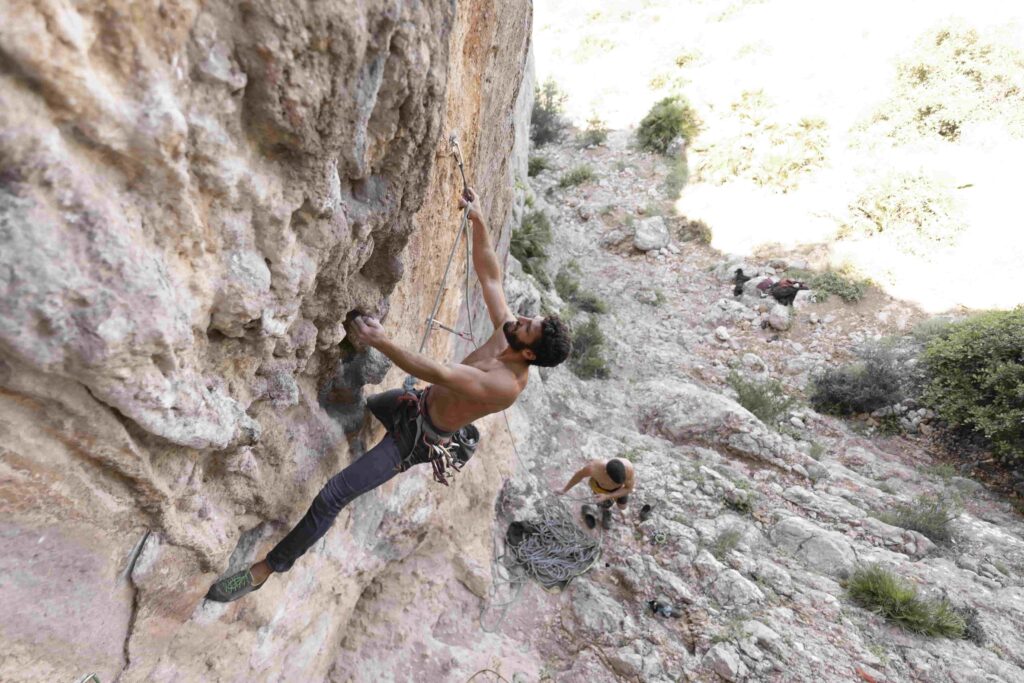
Rock Climbing
Sport Climbing:
Climbing on natural rock formations or artificial walls with the use of anchors and bolts for protection.
Bouldering:
Climbing short but challenging routes without ropes, focusing on strength and technique. Typically done on boulders or artificial walls with crash pads for safety.
Traditional Climbing (Trad):
Climbers place their own protective gear in the rock as they ascend, requiring a higher level of skill and experience.

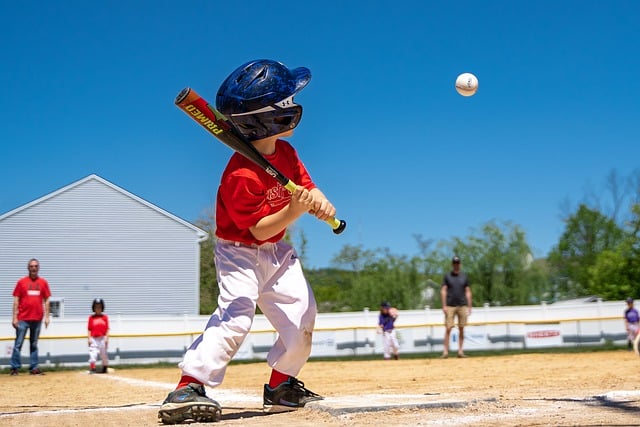
Team Sports
Team sports involve groups of players working together towards a common goal, usually to score points against an opposing team. These sports emphasize cooperation, strategy, and communication.
Soccer (Football)
Overview: Played with two five-player teams against each other, with the goal of scoring points by putting the ball through the opponent’s hoop.
Popularity: Widely regarded as the world’s most popular sport, with major events like the FIFA World Cup.
Basketball
Overview: Played with two teams of five players each, aiming to score points by shooting a ball through the opponent’s hoop.
Variations: Includes street basketball (played informally on outdoor courts) and professional leagues like the NBA.
Baseball
Overview: Involves two teams of nine players each, taking turns batting and fielding, with the objective of scoring runs by hitting a ball and running around bases.
Cultural Significance: Known as America’s pastime, with a rich history and major leagues like MLB.

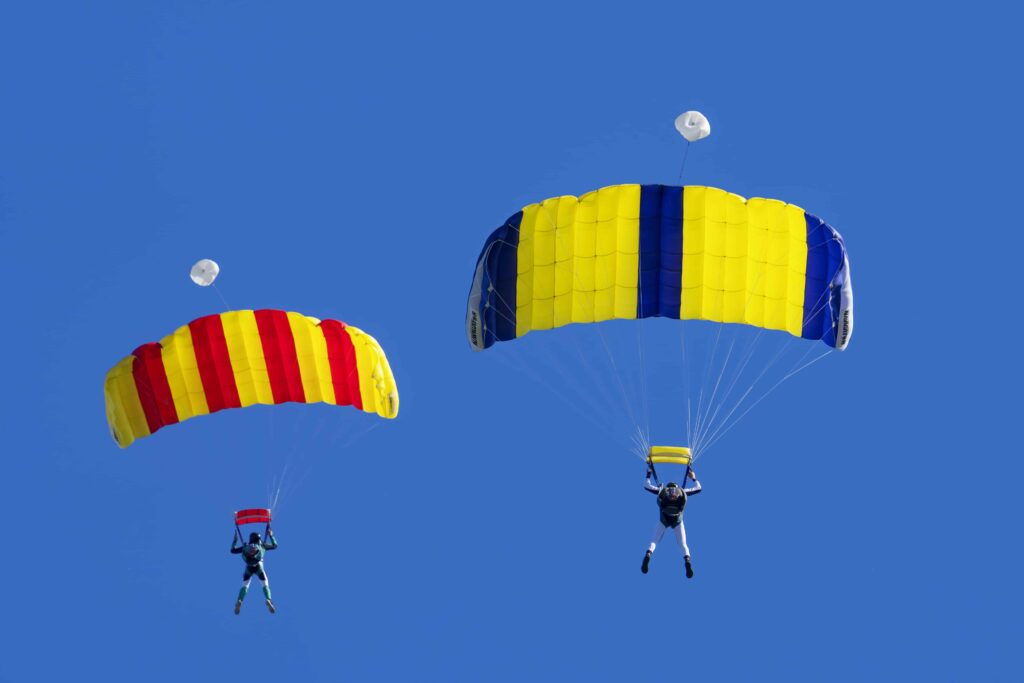
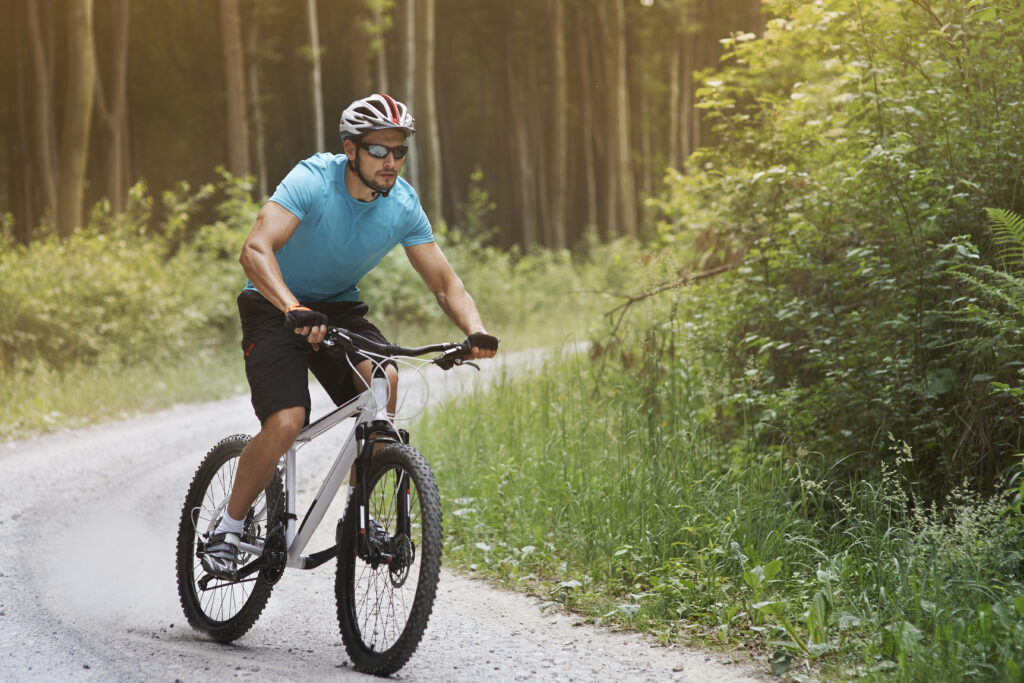
Adventure and Extreme Sports
Adventure and extreme sports are characterized by their high risk and adrenaline-pumping nature. These activities often take place in challenging environments and require specialized skills and equipment.
Surfing
Overview: Involves riding ocean waves on a surfboard, requiring balance, timing, and wave-reading skills.
Variations: Includes short boarding (using shorter, more maneuverable boards) and longboarding (using longer, more stable boards).
Skydiving
Overview: Involves leaping from an airplane, falling freely, and then using a parachute to make a safe landing. Offers a thrilling experience of free fall and parachute flight.
Disciplines: Includes tandem jumps (with an instructor), solo jumps, and formations like free flying and wing suit flying.
Mountain Biking
Overview: Involves riding specially designed bikes on off-road trails with natural obstacles.
Disciplines: Includes cross-country (XC), downhill (DH), and freeride, each with varying levels of difficulty and terrain.
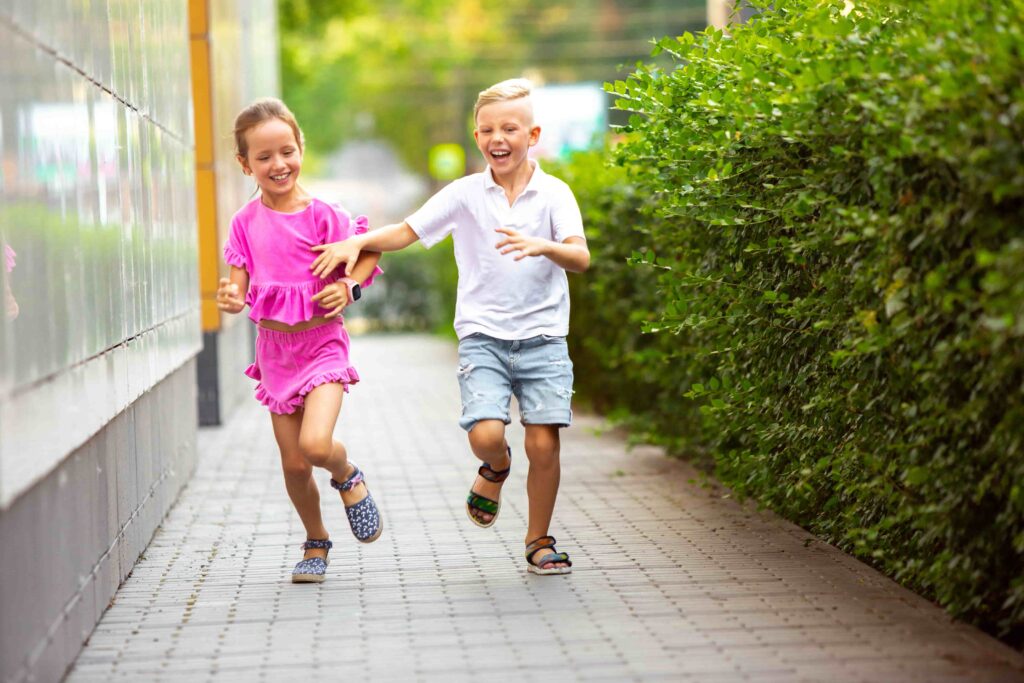

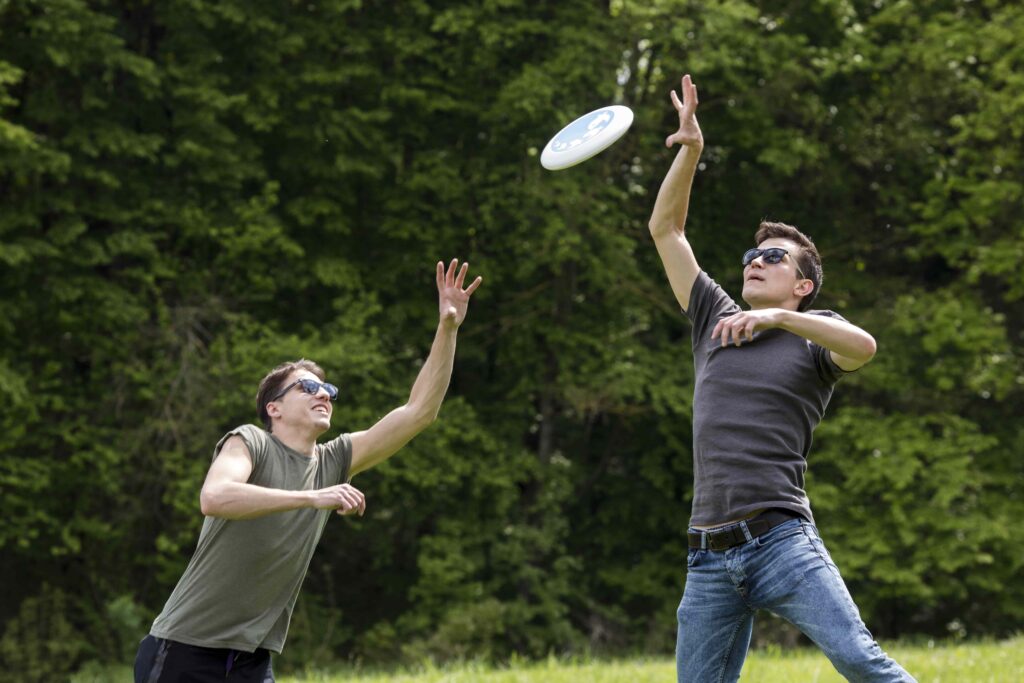
Recreational Games
Recreational games are usually informal, often spontaneous activities that prioritize fun, relaxation, and social interaction over competition.
Tag
Overview: A simple game where one player (the “it” person) chases and tries to touch other players, who then become “it.”
Variations: Includes freeze tag (tagged players must freeze until freed) and flashlight tag (played at night with flashlights).
Hide and Seek
Overview: One player counts while others hide, then seeks out the hidden players.
Popularity: A timeless game enjoyed by children worldwide, adaptable to various environments.
Frisbee
Overview: Involves throwing a plastic disc to one another, often in open spaces like parks and beaches.
Variations: Includes Ultimate Frisbee (a team sport with rules similar to soccer) and disc golf (playing with targets like in golf).
Conclusion
The diverse categories of outdoor games offer something for everyone, from the solitary thrill of individual sports to the collaborative excitement of team sports, the adrenaline rush of adventure activities, and the simple joys of recreational play. These activities not only provide physical and mental benefits but also foster social connections and a deep appreciation for the natural environment.
Health Benefits of Outdoor Games
Outdoor games offer a multitude of health benefits that encompass physical, mental, and social well-being. Engaging in these activities can significantly enhance the quality of life and promote a holistic sense of health.
Physical Health Benefits

Improved Cardiovascular Health
Enhanced Heart Function:
Regular participation in outdoor games like running, soccer, and cycling strengthens the heart muscle, improving its efficiency in pumping blood.
Reduced Risk of Heart Disease:
Engaging in aerobic outdoor activities helps lower blood pressure, reduce bad cholesterol levels (LDL), and increase good cholesterol levels (HDL), thereby decreasing the risk of heart disease and stroke.

Enhanced Muscular Strength and Endurance
Muscle Development:
Activities such as rock climbing, basketball, and weight-bearing exercises build muscle strength and endurance. These activities challenge different muscle groups, leading to improved muscle tone and overall strength.
Bone Health:
Weight-bearing outdoor sports like hiking, tennis, and soccer stimulate bone formation and increase bone density, reducing the risk of osteoporosis and fractures.
Better Coordination and Balance
Motor Skills Improvement:
Outdoor games that involve complex movements, such as gymnastics, skateboarding, and martial arts, enhance coordination, agility, and balance.
Proprioception:
Activities like trail running and mountain biking improve proprioception—the body’s ability to sense its position and movement in space—leading to better balance and reduced risk of falls and injuries.

Weight Management
Calorie Burning:
Many outdoor games are physically demanding, leading to significant calorie expenditure. This aids in avoiding obesity and keeping a healthy weight.
Metabolism Boost:
Regular physical activity increases metabolic rate, promoting efficient energy use and aiding in weight management.
Improved Immune System
Exposure to Sunlight:
Outdoor activities provide exposure to sunlight, which is essential for the body’s production of vitamin D. A strong immune system is supported by adequate vitamin D levels.
Overall Health:
Regular physical activity enhances circulation, reduces inflammation, and promotes overall health, contributing to a stronger immune system.
Mental Health Benefits

Stress Reduction
Nature’s Calming Effect:
Being outdoors in natural settings has a calming effect on the mind. Activities like walking in the park, hiking, or simply playing games in a green space can reduce cortisol levels, the body’s primary stress hormone.
Mindfulness and Relaxation:
Outdoor games often encourage mindfulness, helping individuals focus on the present moment and forget their worries.
Improved Mood and Mental Well-being
Endorphin Release:
The body’s natural mood enhancers, endorphins, are released when physical exercise occurs. This leads to feelings of happiness and euphoria, reducing symptoms of depression and anxiety.
Social Interaction:
Participating in team sports and group activities fosters social connections, which are crucial for emotional support and mental well-being.
Enhanced Cognitive Function
Brain Health:
Regular physical activity increases blood flow to the brain, promoting the growth of new neurons and enhancing cognitive functions such as memory, attention, and problem-solving skills.
Creativity and Innovation:
Outdoor environments stimulate creativity and innovative thinking. Activities like orienteering and nature exploration challenge the brain in unique ways, encouraging creative problem-solving.
Improved Sleep Quality
Physical Exhaustion:
Engaging in physical activities helps tire the body, leading to better sleep quality and duration.
Mental Relaxation:
The stress-reducing benefits of outdoor activities contribute to a more relaxed mind, making it easier to fall asleep and enjoy restful sleep.
Social Benefits
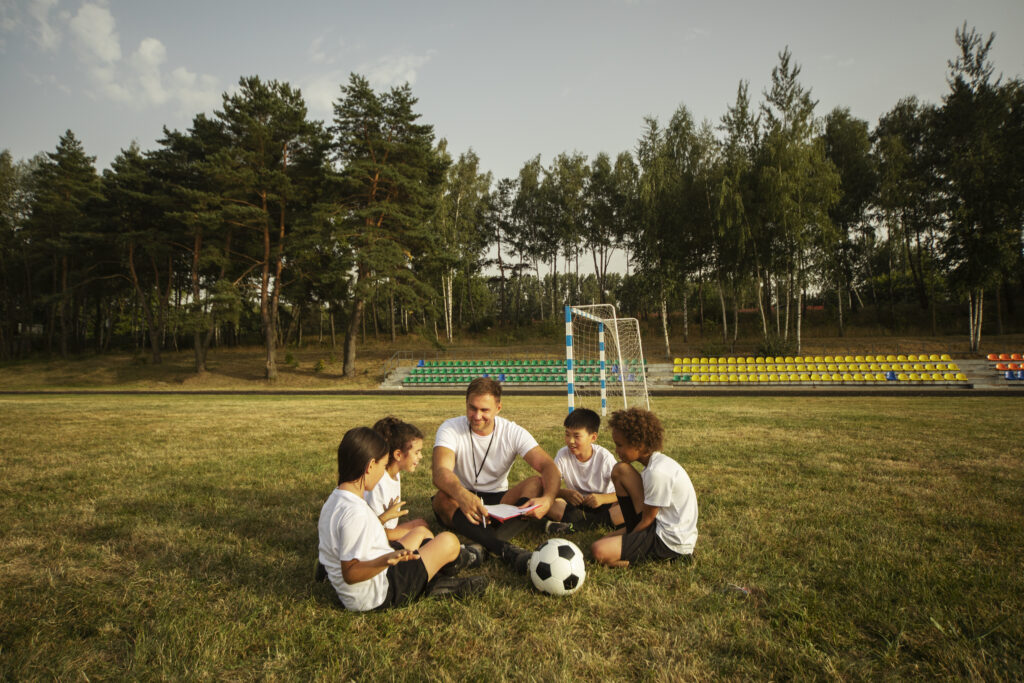
Building Teamwork and Cooperation
Collaborative Skills:
Cooperation and collaboration are fostered by team sports like volleyball, basketball, and soccer, where players must cooperate to achieve a common objective.
Conflict Resolution:
Playing in teams helps individuals develop conflict resolution skills as they navigate disagreements and learn to communicate effectively with teammates.
Developing Communication Skills
Verbal and Non-verbal Communication:
Outdoor games often require players to communicate strategies, tactics, and instructions, enhancing both verbal and non-verbal communication skills.
Listening and Empathy:
Participating in group activities encourages active listening and empathy, as players must understand and support each other.
Strengthening Community Bonds
Community Engagement:
Local sports leagues, outdoor events, and recreational activities bring people together, fostering a sense of community and belonging.
Intergenerational Interaction:
Outdoor games often involve participants of different ages, promoting intergenerational interaction and understanding.
Promoting Inclusivity and Diversity
Inclusivity:
Many outdoor games can be adapted to include people of all abilities, promoting inclusivity and ensuring that everyone can participate.
Cultural Exchange:
Participating in traditional games from different cultures encourages cultural exchange and appreciation, fostering a more inclusive society.
Conclusion
The health benefits of outdoor games are extensive, encompassing physical, mental, and social aspects. These activities not only improve cardiovascular health, muscular strength, and coordination but also enhance mood, cognitive function, and social skills. By encouraging regular participation in outdoor games, individuals can enjoy a more balanced, healthy, and fulfilling life.
Outdoor Games for Different Age Groups
Outdoor games can be tailored to suit various age groups, ensuring that everyone from children to seniors can participate, enjoy, and benefit from these activities. Here, we delve into the specific benefits and popular games for each age group, highlighting how outdoor activities can contribute to their overall well-being.
Children
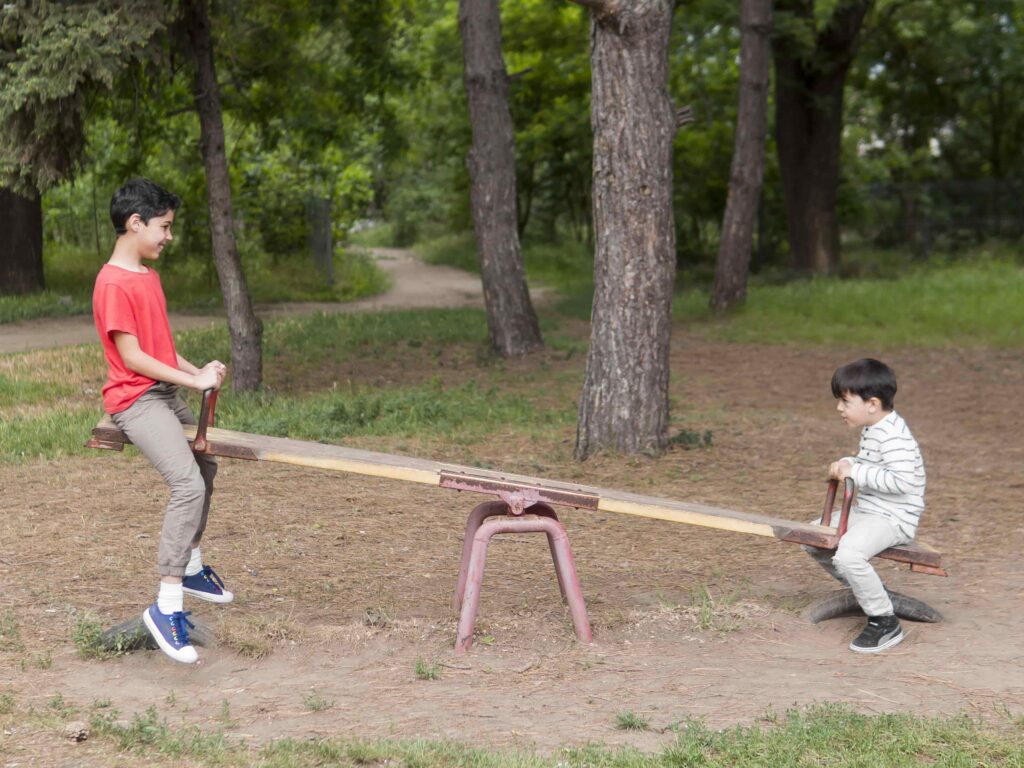
Importance of Play in Child Development
Physical Development:
Children’s coordination, strength, and motor abilities all improve when they play outside.Activities like running, jumping, and climbing are essential for building muscle strength and enhancing physical fitness.
Cognitive Development:
Engaging in outdoor games stimulates cognitive growth, improving attention spans, problem-solving abilities, and creativity. Activities that require strategy and teamwork enhance cognitive skills.
Emotional and Social Development:
Outdoor play promotes social interactions, helping children develop communication skills, empathy, and cooperation. It also provides a healthy outlet for expressing emotions and managing stress.
Popular Outdoor Games for Children
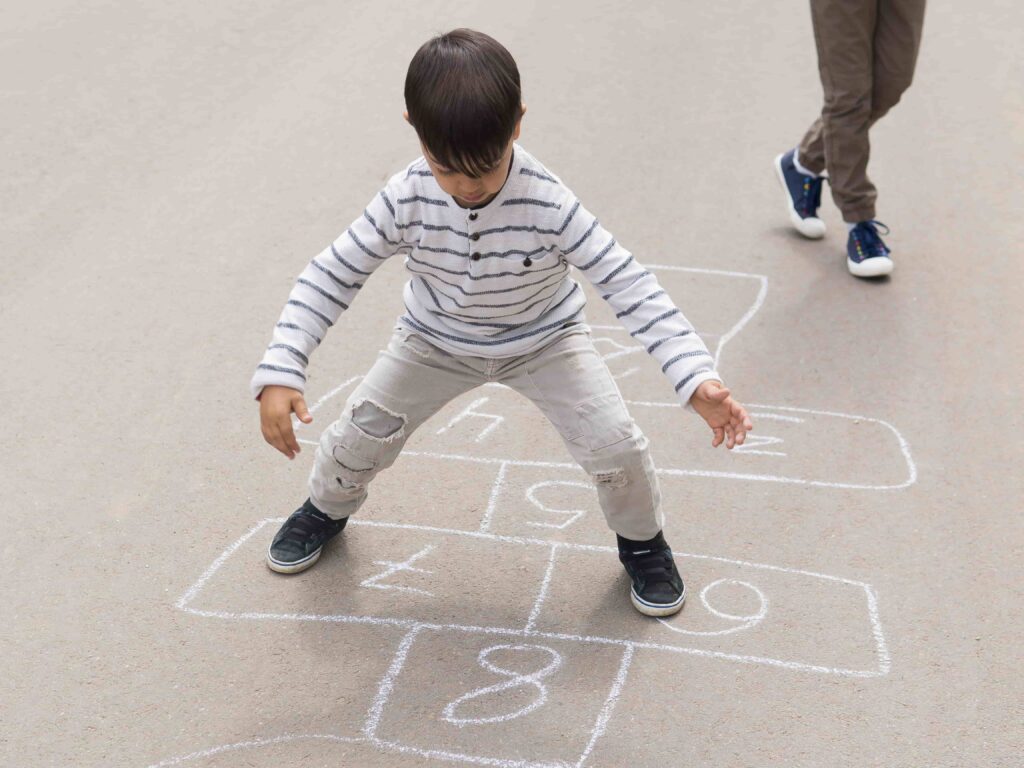
Tag:
A classic game where one child chases others to tag them. Variations like freeze tag and flashlight tag add excitement and can be adapted to different environments.
Hide and Seek:
A game that encourages children to explore their surroundings and develop strategic thinking as they hide and seek.
Obstacle Courses:
Setting up obstacle courses with simple items like cones, ropes, and hoops can provide a fun and challenging physical activity.
Soccer:
Simplified soccer games teach basic skills and promote teamwork, coordination, and physical fitness.
Hopscotch:
A fun and easy game that helps children practice balance, coordination, and number recognition.
Teenagers

Physical and Social Benefits for Teenagers
Fitness and Health:
Outdoor sports help teenagers maintain physical fitness, develop muscle strength, and improve cardiovascular health. Frequent exercise lowers the chance of obesity and associated health problems.
Stress Relief:
Physical activity is a great stress reliever, helping teenagers manage academic and social pressures. Outdoor games provide an enjoyable way to unwind and relax.
Social Skills:
Team sports and group activities foster teamwork, leadership, and communication skills. Participating in sports teams or clubs also provides a sense of belonging and community.
Popular Outdoor Games for Teenagers

Basketball:
A popular sport that can be played in schoolyards, parks, or driveways. It encourages cooperation, coordination, and physical health.
Ultimate Frisbee:
Combines elements of soccer and American football, played with a frisbee. It’s a fast-paced game that encourages teamwork and strategic thinking.
Skateboarding:
A challenging and creative sport that improves balance, coordination, and agility. It also provides a sense of accomplishment and self-expression.
Capture the Flag:
A strategic game where teams compete to capture each other’s flag and bring it back to their base. It promotes teamwork, strategy, and physical fitness.
Running Clubs:
Joining a running club or participating in cross-country events can be a great way for teenagers to stay fit, set personal goals, and develop perseverance.
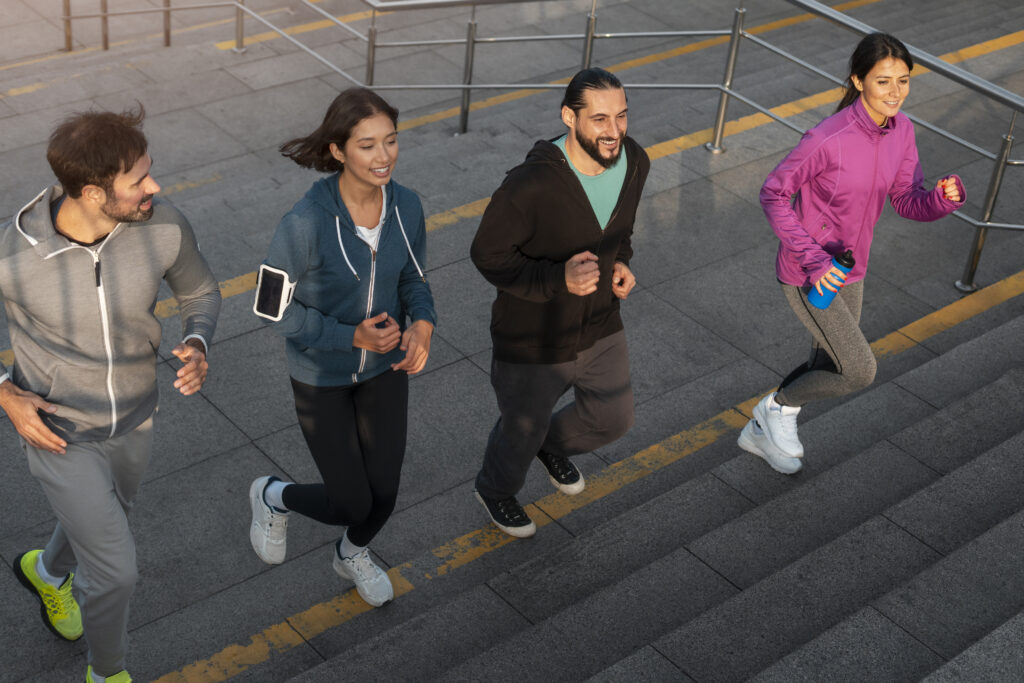
Adults
Maintaining Fitness and Social Connections
Physical Health:
Regular participation in outdoor sports helps adults maintain physical fitness, manage weight, and reduce the risk of chronic diseases such as heart disease, diabetes, and hypertension.
Mental Well-being:
Physical activity reduces stress, anxiety, and depression, promoting overall mental well-being. Outdoor activities provide a break from daily routines and work-related stress.
Social Interaction:
Engaging in team sports or group activities fosters social connections, reducing feelings of loneliness and isolation. It also provides opportunities to meet new people and build friendships.
Popular Outdoor Games for Adults


Soccer and Football:
Team sports that provide a full-body workout, improve cardiovascular health, and promote teamwork and social interaction.
Tennis:
A racquet sport that improves hand-eye coordination, agility, and cardiovascular fitness. It can be played in doubles or singly.
Cycling:
A versatile activity that can be done solo or in groups. It enhances cardiovascular health, strengthens muscles, and provides an opportunity to explore new areas.
Running:
Participating in running events or marathons helps set personal fitness goals and improve overall health. Group runs can also provide social support and motivation.
Yoga and Pilates:
Practicing yoga or Pilates in outdoor settings combines physical fitness with mental relaxation, promoting overall well-being.
Seniors
Keeping Active and Healthy in Later Years
Physical Fitness:
Regular physical activity helps seniors maintain muscle strength, flexibility, and balance, reducing the risk of falls and injuries. It also supports cardiovascular health and overall mobility.
Mental Health:
Outdoor activities reduce stress, anxiety, and depression, promoting mental well-being. They also stimulate cognitive functions and help maintain brain health.
Social Engagement:
Participating in group activities or community events helps seniors stay socially connected, reducing feelings of loneliness and isolation.
Suitable Outdoor Games for Seniors
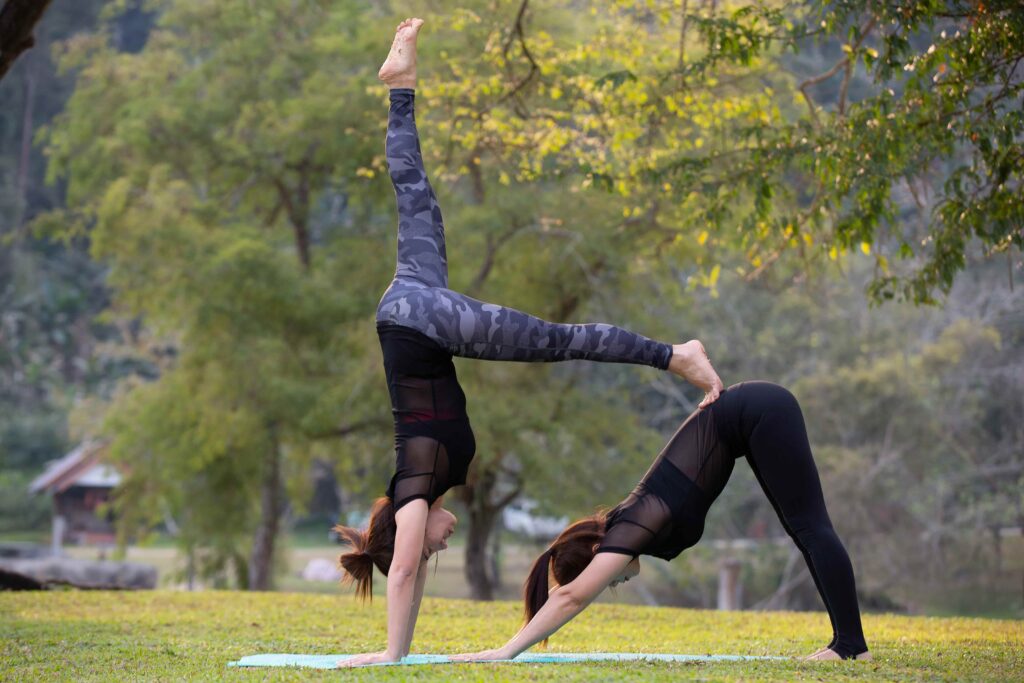
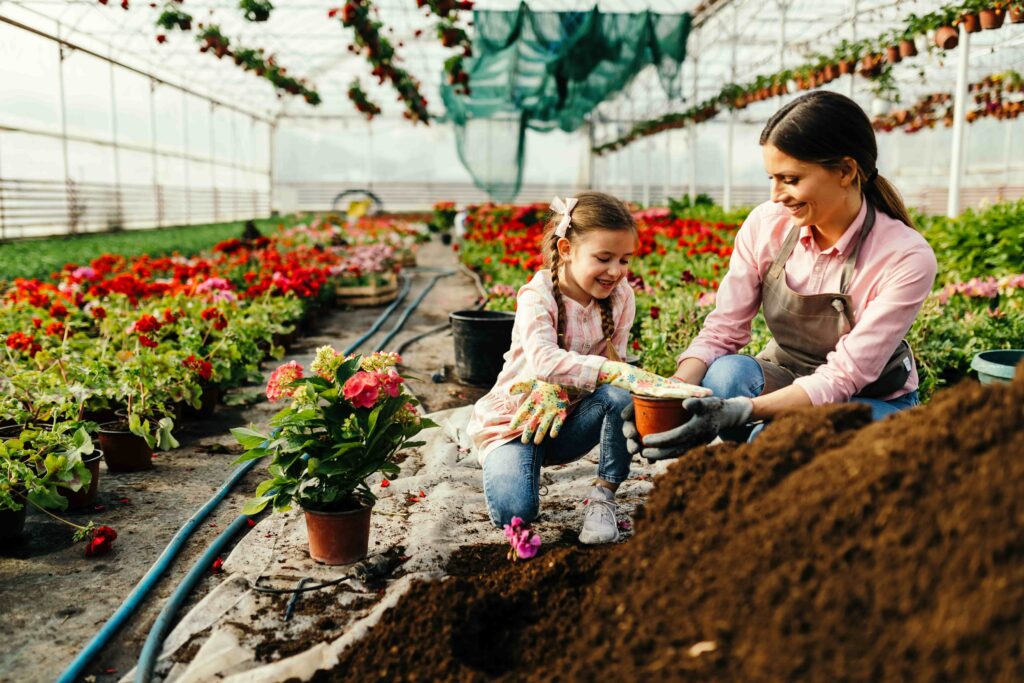

Walking and Hiking:
Low-impact activities that improve cardiovascular health, enhance muscle strength, and promote mental relaxation. Group walks and nature hikes provide social interaction and connection with nature.
Bocce Ball:
A simple and enjoyable game that promotes hand-eye coordination and social interaction. It can be played in parks, backyards, or community centers.
Gardening:
Combines light physical activity with mental relaxation. Gardening improves flexibility, strength, and cognitive functions while providing a sense of accomplishment.
Tai Chi:
A gentle form of exercise that enhances balance, flexibility, and mental relaxation. Practicing Tai Chi in outdoor settings adds the benefits of fresh air and natural surroundings.
Golf:
A popular sport that combines walking with skillful play. It promotes physical fitness, mental focus, and social interaction.
Conclusion
Outdoor games offer a wealth of benefits for individuals of all age groups, from the developmental advantages for children to the fitness and social benefits for adults and seniors. By engaging in outdoor activities, people can improve their physical health, enhance their mental well-being, and foster social connections, making outdoor games an essential part of a balanced and healthy lifestyle.
Safety and Precautions for Outdoor Games
Ensuring safety during outdoor games is crucial to prevent injuries and create a positive experience for all participants. Here, we outline detailed safety measures and precautions across various aspects, including personal safety, environmental awareness, and equipment use.
Personal Safety

Proper Warm-up and Cool-down
Warm-up:
Engage in dynamic stretches and light aerobic exercises before starting any outdoor activity to increase blood flow, loosen muscles, and prepare the body for physical exertion An effective warm-up can aid in the avoidance of injuries and muscular strains.
Cool-down:
After completing the activity, perform static stretches and low-intensity exercises to gradually reduce heart rate and relax muscles. This helps in preventing stiffness and muscle soreness.
Hydration

Regular Hydration:
Drink water before, during, and after outdoor activities to maintain hydration levels, especially in hot weather. Fatigue, lightheadedness, and heat-related diseases can result from dehydration.
Electrolytes:
For prolonged or intense activities, consider electrolyte drinks to replenish lost minerals and maintain electrolyte balance.
Appropriate Clothing and Footwear

Clothing:
Wear moisture-wicking, breathable fabrics to stay comfortable and prevent overheating. Layering is recommended in colder weather to maintain body temperature.
Footwear:
Choose appropriate shoes that provide adequate support and grip for the specific activity. Proper footwear reduces the risk of slips, falls, and foot injuries.

Use of Sun Protection
Sunscreen:
Apply a broad-spectrum sunscreen with an SPF of at least 30 to all exposed skin areas, even on cloudy days, to protect against harmful UV rays.
Protective Gear:
Wear sunglasses with UV protection and a wide-brimmed hat to shield your eyes and face from the sun.

First Aid Knowledge
Basic First Aid:
Learn basic first aid skills such as treating cuts, sprains, and minor injuries. Carry a first aid kit that includes bandages, antiseptic wipes, pain relievers, and any necessary personal medications.
Emergency Contacts:
Have emergency contact information readily available and know the location of the nearest medical facility in case of serious injuries.
Environmental Awareness
Weather Conditions
Check Forecasts:
Always check the weather forecast before heading out. Avoid outdoor activities during extreme weather conditions such as thunderstorms, heavy rain, snowstorms, or high heat.
Adapt Activities:
Modify or postpone activities if adverse weather conditions arise. For example, seek shelter during lightning storms or take frequent breaks in the shade during high temperatures.
Terrain and Surroundings
Familiarize Yourself:
Know the terrain and environment where the activity will take place. Be aware of potential hazards such as uneven ground, rocks, or slippery surfaces.
Mark Trails:
When hiking or exploring new areas, use marked trails and maps to avoid getting lost. Tell someone where you’re going and when you intend to be back.
Wildlife and Plants
Avoid Disturbing Wildlife:
Respect local wildlife and maintain a safe distance. It can be risky to approach or feed animals.
Identify Hazardous Plants:
Learn to recognize poisonous plants such as poison ivy, poison oak, and stinging nettles. Avoid contact with these plants and educate others about them.
Environmental Conservation
Leave No Trace:
Follow the principles of Leave No Trace by packing out all trash, respecting wildlife, and minimizing your impact on natural environments.
Sustainable Practices:
Use eco-friendly products and equipment, stay on designated paths, and avoid disturbing natural habitats.
Equipment and Gear
Proper Maintenance and Inspection
Regular Checks:
Inspect all equipment and gear before use. Look for signs of wear and tear, damage, or malfunction. Replace or repair any faulty equipment.
Maintenance:
Follow manufacturer guidelines for maintaining and storing equipment. This includes cleaning, lubricating, and storing items in a safe, dry place.
Appropriate Gear for Activities
Safety Gear:
Use appropriate safety gear such as helmets, knee pads, elbow pads, and life jackets based on the activity. For example, wear helmets for cycling, skateboarding, and rock climbing.
Specialized Equipment:
Ensure you have the right equipment for the activity, such as proper hiking boots, climbing ropes, or kayaking paddles.
Correct Usage and Training
Skill Development:
Take the time to learn and practice the correct techniques for using equipment. Attend training sessions or seek guidance from experienced individuals if necessary.
Supervision and Assistance:
For activities that require higher skills or pose greater risks, such as rock climbing or scuba diving, ensure proper supervision and assistance are available.
Emergency Equipment
Communication Devices:
Carry a mobile phone, walkie-talkie, or other communication devices to stay in touch and call for help if needed. Ensure these devices are fully charged before heading out.
Navigation Tools:
Use GPS devices, compasses, and maps to navigate unfamiliar areas. Knowing how to use these tools can prevent getting lost and help in emergencies.
Conclusion
Ensuring safety and taking necessary precautions during outdoor games is vital for preventing injuries, promoting a positive experience, and protecting the environment. By focusing on personal safety, being aware of environmental conditions, and using the appropriate equipment and gear, participants can enjoy the full benefits of outdoor activities while minimizing risks. Prioritizing safety not only enhances the enjoyment of outdoor games but also fosters a culture of responsibility and awareness among all participants.
Promoting Outdoor Games
Promoting outdoor games involves encouraging participation, raising awareness about the benefits, and creating supportive environments for various activities. Here, we outline strategies and initiatives that can effectively promote outdoor games across different demographics.
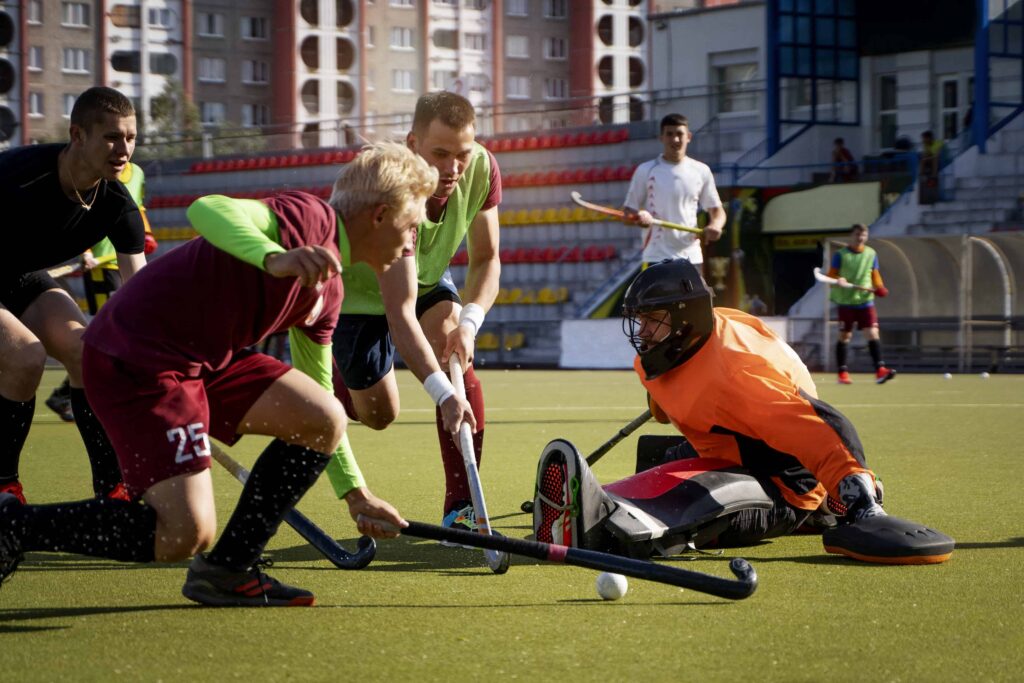
Community Programs and Events
Organized Sports Leagues
Youth Leagues:
Establish youth sports leagues to provide structured opportunities for children and teenagers to participate in outdoor games such as soccer, baseball, and basketball. These leagues foster skill development, teamwork, and physical fitness.
Adult Leagues:
Create adult recreational leagues for sports like softball, soccer, and ultimate frisbee. These leagues offer a way for adults to stay active, socialize, and enjoy friendly competition.
Seasonal Events and Tournaments
Local Tournaments:
Host local tournaments for various outdoor games to engage the community and encourage participation. These events can include prizes, medals, and recognition, motivating individuals to take part.
Seasonal Festivals:
Organize seasonal outdoor festivals that feature a variety of games and activities. These festivals can include obstacle courses, relay races, and traditional games, providing fun for all age groups.
Community Workshops and Clinics
Skill Development:
Offer workshops and clinics led by experienced coaches or athletes to teach specific skills for different outdoor games. These sessions can help participants improve their techniques and gain confidence.
Fitness and Wellness:
Conduct fitness and wellness workshops that incorporate outdoor activities. Topics can include the benefits of outdoor exercise, injury prevention, and nutrition.
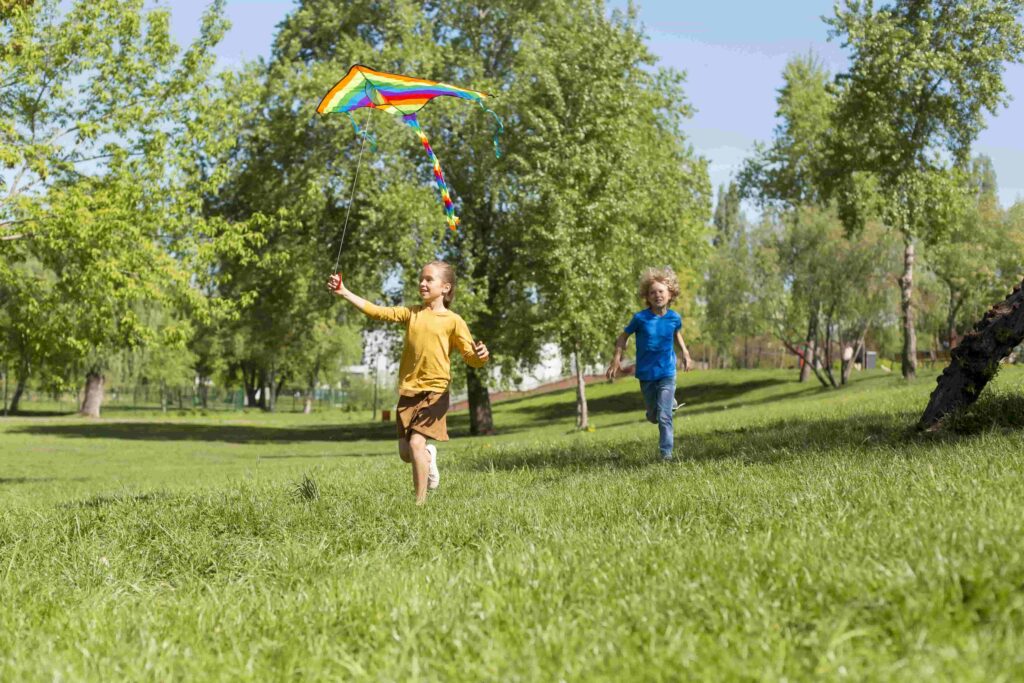
School and Educational Initiatives
Physical Education Programs
Curriculum Integration:
Integrate a diverse range of outdoor games into the physical education curriculum. Activities such as soccer, track and field, and orienteering can be included to promote physical fitness and teamwork.
Teacher Training:
Provide training and resources for physical education teachers to effectively teach and promote outdoor games. This can include workshops, instructional materials, and access to equipment.
After-School Programs
Extracurricular Sports:
Establish after-school programs that focus on outdoor sports and activities. These programs can offer additional opportunities for students to engage in physical activity and develop their skills.
Recreational Clubs:
Create clubs for specific outdoor interests, such as hiking, cycling, or nature exploration. These clubs can organize regular outings and events to encourage participation.
School Competitions and Events
Inter-School Competitions:
Organize competitions between schools in various outdoor sports. These events can foster a sense of school pride and healthy competition.
Field Days:
Host annual field days that include a variety of outdoor games and activities. These activities encourage cooperation, school pride, and physical fitness.
Government and Policy Support
Funding and Grants
Sports Funding:
Allocate government funds and grants to support the development and maintenance of sports facilities, parks, and recreational areas. Financial support can also be provided to community programs and initiatives that promote outdoor games.
Equipment Subsidies:
Offer subsidies or grants to schools, community centers, and sports clubs for purchasing equipment and gear for outdoor activities.
Public Awareness Campaigns
Health Campaigns:
Launch public health campaigns that highlight the physical, mental, and social benefits of outdoor games. Use various media platforms, such as social media, TV, and print, to reach a wide audience.
Engagement Initiatives:
Develop initiatives to engage specific demographics, such as seniors, people with disabilities, and marginalized communities, in outdoor activities.
Infrastructure Development
Parks and Recreational Areas:
Invest in the development and maintenance of parks, playgrounds, and recreational areas to provide safe and accessible spaces for outdoor activities.
Sports Facilities:
Build and maintain sports facilities such as fields, courts, and tracks to support organized sports and recreational activities.
Corporate and Private Sector Involvement
Sponsorship and Partnerships
Event Sponsorship:
Encourage businesses to sponsor community events, tournaments, and sports leagues. Sponsorship can provide financial support and increase the visibility of outdoor games.
Corporate Partnerships:
Develop partnerships with companies to promote outdoor activities among employees. Businesses can sponsor employee sports teams, organize company-wide outdoor events, and provide incentives for participation.
Corporate Wellness Programs
Outdoor Fitness Programs:
Incorporate outdoor fitness activities into corporate wellness programs. Activities such as group walks, cycling clubs, and outdoor yoga sessions can enhance employee well-being and promote a healthy lifestyle.
Team-Building Events:
Organize team-building events that involve outdoor games and activities. These events can improve team cohesion, communication, and morale.
Product and Service Promotion
Outdoor Gear and Equipment:
Promote outdoor gear and equipment through marketing campaigns and sponsorships. Highlighting the benefits and uses of these products can encourage participation in outdoor games.
Fitness and Recreation Services:
Offer services such as guided outdoor excursions, fitness training, and recreational coaching to support individuals in engaging in outdoor activities.

Media and Technology
Social Media Campaigns
Awareness and Engagement:
Use social media platforms to raise awareness about the benefits of outdoor games and share information about local events and programs. Engage the community through interactive content, challenges, and competitions.
Success Stories:
Share success stories and testimonials from individuals who have benefited from participating in outdoor games. Highlighting personal experiences can inspire others to get involved.
Mobile Apps and Online Platforms
Activity Trackers:
Develop and promote mobile apps that track outdoor activities, provide fitness goals, and offer incentives for participation. These apps can also include features for finding local events and connecting with other participants.
Online Communities:
Create online communities and forums where individuals can share experiences, find activity partners, and organize group events. These platforms can provide support and motivation for staying active.
Virtual Events and Competitions
Virtual Challenges:
Organize virtual challenges and competitions that encourage outdoor activity. Participants can track their progress using mobile apps and share their achievements online.
Live Streaming and Webinars:
Host live streaming events and webinars that provide information, tips, and training for various outdoor games. These sessions can engage a broad audience and offer valuable insights.
Conclusion
Promoting outdoor games requires a multifaceted approach that involves community engagement, educational initiatives, government support, corporate involvement, and effective use of media and technology. By implementing these strategies, we can create a supportive environment that encourages participation in outdoor activities, enhancing physical fitness, mental well-being, and social connections across all demographics.
Final Thoughts and Comprehensive Summary
Holistic Benefits
Comprehensive Impact:Summarize the holistic benefits of outdoor games, emphasizing their impact on physical health, mental well-being, and social connections.
Overall Well-being:Reinforce the idea that outdoor games contribute significantly to overall well-being and a balanced, healthy lifestyle.
Call to Action
Encouragement to Participate:Encourage readers to actively seek out and participate in outdoor games, making them a regular part of their lives.
Community Support:Urge community members, policymakers, educators, and businesses to support initiatives and programs that promote outdoor activities.
Future Outlook
Sustained Efforts:Emphasize the importance of sustained efforts and ongoing support to ensure that outdoor games remain an accessible, enjoyable, and beneficial activity for all.
Positive Change:Conclude with a hopeful outlook on how promoting outdoor games can lead to positive changes in individuals’ lives and communities, fostering healthier, happier, and more connected societies.
The article on outdoor games explores the multifaceted benefits and importance of engaging in physical activities in an open environment. Outdoor games range from organized sports like soccer and basketball to recreational activities such as hiking and cycling, offering a variety of options for people of all ages and abilities.
Historical Perspective
Outdoor games have a rich history, evolving from ancient cultural and traditional activities to modern organized sports. The evolution reflects changes in societal structures, technological advancements, and cultural exchanges, showing a continuity of physical activities being central to human development and social interaction.
Categories of Outdoor Games
Outdoor games can be broadly categorized into team sports, individual sports, recreational activities, and adventure sports. Every category has its own advantages and accommodates varying tastes and levels of fitness.
Team sports like soccer and basketball promote teamwork and social interaction, while individual sports such as running and swimming focus on personal achievement. Recreational activities like hiking provide relaxation and connection with nature, and adventure sports such as rock climbing offer thrill and excitement.
Health Benefits of Outdoor Games
The health benefits of outdoor games are extensive:
- Physical Health: Participation improves cardiovascular fitness, muscle strength, flexibility, and aids in weight management.
- Mental Well-being: Outdoor games reduce stress, enhance mood, and improve cognitive functions.
- Social Connections: They foster teamwork, strengthen friendships, and create a sense of community.
Outdoor Games for Different Age Groups
Outdoor games cater to all age groups:
- Children: Activities like tag and soccer enhance physical development and social skills.
- Teenagers: Sports like basketball and skateboarding provide physical fitness and social interaction.
- Adults: Running, cycling, and yoga offer stress relief and fitness.
- Seniors: Walking, Tai Chi, and gardening promote mobility and mental health.
Safety and Precautions
Ensuring safety in outdoor games involves proper warm-up and cool-down routines, staying hydrated, wearing appropriate gear, and being mindful of environmental conditions. Basic first aid knowledge and awareness of emergency contacts are also crucial for safe participation.
Promoting Outdoor Games
Promoting outdoor games requires a multifaceted approach:
- Community Programs and Events: Organizing sports leagues, workshops, and festivals.
- School and Educational Initiatives: Integrating outdoor activities into curriculums and after-school programs.
- Government and Policy Support: Providing funding, developing infrastructure, and running public awareness campaigns.
- Corporate and Private Sector Involvement: Sponsoring events, offering wellness programs, and partnering with community organizations.
- Media and Technology: Using social media, mobile apps, and online platforms to engage and educate the community.
Conclusion
The article underscores the comprehensive benefits of outdoor games for physical health, mental well-being, and social connections. It calls for inclusive participation across all age groups, sustained engagement through community support and infrastructure development, and ongoing education and awareness efforts. By fostering a culture of active living and community involvement, outdoor games can significantly enhance the quality of life for individuals and communities, promoting healthier, happier, and more connected societies.
Overall, outdoor games are a vital component of a balanced, healthy lifestyle, providing enjoyment, fitness, and social interaction. Their promotion and integration into daily life can lead to profound positive changes, encouraging individuals to embrace the outdoors and engage in physical activities that benefit both body and mind.
Contact Us for any Question related to this Article.
Frequently Asked Questions
What are outdoor games?
Outdoor games are physical activities played in an open environment, typically involving physical exertion, skill, and sometimes strategy. They can range from traditional sports like soccer and basketball to recreational activities like hiking, cycling, and Frisbee.
Why are outdoor games important for physical health?
Outdoor games are crucial for physical health because they:
- Improve cardiovascular fitness.
- Build muscle strength and endurance.
- Enhance flexibility and coordination.
- Aid in weight management and prevent obesity.
- Lower the chance of developing long-term conditions like diabetes, hypertension, and heart disease.
How do outdoor games benefit mental well-being?
Outdoor games benefit mental well-being by:
- Reducing stress and anxiety.
- Enhancing mood and overall happiness.
- Improving cognitive functions like concentration, creativity, and problem-solving.
- Providing a break from routine and technology, fostering a sense of relaxation.
What are the social benefits of participating in outdoor games?
Participating in outdoor games offers numerous social benefits, including:
- Building teamwork and communication skills
- Strengthening friendships and social bonds
- Creating a sense of community and belonging
- Offering opportunities for social interaction and reducing feelings of isolation
How can outdoor games be made inclusive for all age groups?
To make outdoor games inclusive for all age groups:
- Adapt games to suit different skill levels and physical abilities.
- Provide appropriate facilities and equipment.
- Encourage participation from children, teenagers, adults, and seniors.
- Organize age-specific events and programs.
What safety precautions should be taken during outdoor games?
Safety precautions include:
- Warming up and cooling down properly.
- Staying hydrated and using sun protection.
- Wearing appropriate clothing and footwear.
- Learning basic first aid and having emergency contacts available.
- Being aware of environmental conditions and terrain.
- Using and maintaining proper equipment.
How can communities promote outdoor games?
Communities can promote outdoor games by:
- Organizing sports leagues, tournaments, and seasonal events.
- Offering workshops and clinics for skill development.
- Providing funding and grants for sports facilities and equipment.
- Running public awareness campaigns about the benefits of outdoor games.
What role do schools play in promoting outdoor games?
Schools can promote outdoor games by:
- Integrating a variety of outdoor activities into physical education programs.
- Offering after-school sports programs and recreational clubs.
- Organizing inter-school competitions and field days.
- Training teachers to effectively teach and encourage outdoor activities.
How can the government support the promotion of outdoor games?
The government can support outdoor games by:
- Allocating funds and grants for sports infrastructure and community programs.
- Developing policies that prioritize physical activity and outdoor recreation.
- Running public health campaigns to raise awareness about the benefits of outdoor games.
- Investing in the maintenance and development of parks and recreational areas.
What can the private sector do to promote outdoor games?
The private sector can promote outdoor games by:
- Sponsoring events, leagues, and community programs.
- Developing corporate wellness programs that include outdoor activities.
- Offering products and services related to outdoor recreation.
- Partnering with organizations to support and promote outdoor activities.
How can technology be used to promote outdoor games?
Technology can promote outdoor games through:
- Mobile apps that track activities, set fitness goals, and offer incentives.
- Social media campaigns that raise awareness and engage the community.
- Online platforms that connect participants and organize events.
- Virtual challenges and competitions that encourage participation.
What are some examples of popular outdoor games for different age groups?
Examples of outdoor games for different age groups include:
- Children: Tag, hide and seek, obstacle courses, soccer, hopscotch.
- Teenagers: Basketball, ultimate frisbee, skateboarding, capture the flag, running clubs.
- Adults: Soccer, tennis, cycling, running, yoga.
- Seniors: Walking, bocce ball, gardening, Tai Chi, golf.
How can individuals get started with outdoor games?
To get started with outdoor games:
- Choose an activity that interests you and suits your fitness level.
- Find local clubs, leagues, or community programs that offer the activity.
- Invest in appropriate gear and equipment.
- Start gradually and build up your skills and endurance.
- Invite friends or family to join for added motivation and enjoyment.
Why is sustained engagement in outdoor games important?
Sustained engagement in outdoor games is important because:
- It ensures long-term physical and mental health benefits.
- Helps in building and maintaining healthy habits.
- Promotes a lifelong active lifestyle.
- Strengthens social connections and community involvement.
What is the future outlook for outdoor games?
The future outlook for outdoor games is positive, with continued efforts to:
- Promote inclusivity and accessibility for all.
- Invest in infrastructure and supportive environments.
- Leverage technology to engage more participants.
- Encourage a lifestyle that emphasizes community service and active living.
.
How can outdoor games contribute to environmental awareness?
Outdoor games contribute to environmental awareness by:
- Encouraging Exploration: Engaging in activities like hiking and nature walks helps individuals appreciate natural landscapes and ecosystems.
- Promoting Conservation: Participation in outdoor activities often includes education about environmental conservation and responsible behavior.
- Reducing Carbon Footprint: Many outdoor games, such as walking and cycling, promote low-impact transportation options that reduce environmental pollution.
What are some outdoor games that can be played with minimal equipment?
Outdoor games that require minimal equipment include:
- Tag: A classic game that needs no equipment other than an open space.
- Frisbee: Requires just a frisbee and an open area.
- Kickball: Needs a ball and a makeshift base, which can be improvised.
- Capture the Flag: Only requires flags or markers and a large open space.
How can parents encourage their children to participate in outdoor games?
Parents can encourage children to participate in outdoor games by:
- Setting an Example: Engage in outdoor activities with your children to make it a family tradition.
- Creating Fun Opportunities: Organize regular family outings, playdates, and outdoor playtimes.
- Providing Access: Ensure your children have access to appropriate equipment and safe play areas.
- Offering Variety: Introduce different types of outdoor games to keep their interest alive and cater to their preferences.
What are some outdoor games suitable for small or urban spaces?
Outdoor games suitable for small or urban spaces include:
- Mini Soccer or Basketball: Use smaller goals or hoops and a smaller ball.
- Cornhole: A bean bag toss game that can be played in a small backyard or patio.
- Jump Rope: Requires minimal space and is great for cardiovascular exercise.
- Hula Hooping: A fun activity that takes up very little space.
How can communities ensure outdoor games are accessible to people with disabilities?
Communities can ensure accessibility by:
- Adapting Facilities: Design parks and recreational areas with accessible pathways, ramps, and inclusive play equipment.
- Providing Specialized Equipment: Offer adaptive sports equipment, such as wheelchairs for basketball or specially designed scooters.
- Training Staff: Educate and train staff and volunteers on how to assist individuals with disabilities in participating in outdoor activities.
- Hosting Inclusive Events: Organize events that are specifically designed to be inclusive and welcoming to people with varying abilities.
What are some ways to make outdoor games more engaging for teenagers?
To make outdoor games more engaging for teenagers:
- Incorporate Technology: Use fitness trackers, apps, and social media to create challenges and share achievements.
- Offer Choice: Allow teens to choose the activities they are interested in and offer a variety of options.
- Create Competitions: Organize friendly competitions and tournaments to add a fun, competitive element.
- Involve Friends: Encourage participation with friends to make the activities more social and enjoyable.
How can technology be used to track and improve performance in outdoor games?
Technology can be used to:
- Track Activity: Use fitness trackers and mobile apps to monitor physical activity, set goals, and measure progress.
- Analyze Performance: Utilize apps and devices that provide detailed analysis of performance metrics, such as speed, distance, and calories burned.
- Set Challenges: Participate in virtual challenges and competitions that track performance and offer rewards.
- Access Training Resources: Use online platforms to access training programs, instructional videos, and tips for improving skills.
What are some effective strategies for maintaining interest in outdoor games over time?
To maintain interest in outdoor games:
- Set Goals: Establish personal or team goals to stay motivated and track progress.
- Mix It Up: Regularly introduce new activities or variations to keep the experience fresh and exciting.
- Join Groups: Participate in clubs or groups to stay engaged and enjoy social aspects.
- Celebrate Achievements: Maintaining enthusiasm requires acknowledging and celebrating accomplishments and milestones.
How can outdoor games benefit community health?
Outdoor games benefit community health by:
- Reducing Healthcare Costs: Encouraging physical activity lowers the incidence of chronic diseases and reduces healthcare expenses.
- Promoting Social Cohesion: Games foster community spirit, reducing isolation and building supportive networks.
- Enhancing Quality of Life: Regular engagement in outdoor activities improves overall quality of life by promoting physical and mental well-being.
What are some common barriers to participating in outdoor games, and how can they be overcome?
Common barriers and solutions include:
- Lack of Time: Schedule regular outdoor activities into your routine and prioritize them as part of a balanced lifestyle.
- Limited Access to Facilities: Advocate for the development of local parks and recreational areas, or use alternative spaces like community centers.
- Weather Conditions: Plan indoor alternatives or adjust activity times to avoid extreme weather conditions.
- Cost: Look for free or low-cost activities and use available community resources.
How can outdoor games be adapted for different cultural contexts?
Outdoor games can be adapted by:
- Incorporating Local Traditions: Integrate traditional games and cultural practices into outdoor activities.
- Respecting Cultural Norms: Ensure activities align with cultural values and norms, and are inclusive of all community members.
- Engaging Local Leaders: Work with local leaders to understand community preferences and promote activities that resonate culturally.
What are some popular outdoor games that can be enjoyed individually?
Popular outdoor games for individuals include:
- Running or Jogging: A simple and effective form of exercise that can be done alone.
- Cycling: Enjoyable as a solitary activity and can be done on various terrains.
- Solo Hiking: Explore nature and enjoy solitude while hiking.
- Disc Golf: A relaxing and engaging activity that can be played alone.
What should be considered when organizing a community outdoor game event?
When organizing a community outdoor game event, consider:
- Target Audience: Recognize the participants’ needs and areas of interest.
- Location and Facilities: Choose an accessible location with appropriate facilities and equipment.
- Promotion and Outreach: Use various channels to promote the event and attract participants.
- Safety Measures: Implement safety protocols, including first aid, hydration stations, and emergency contacts.
- Logistics and Planning: Plan the event details, including scheduling, staffing, and equipment setup.
